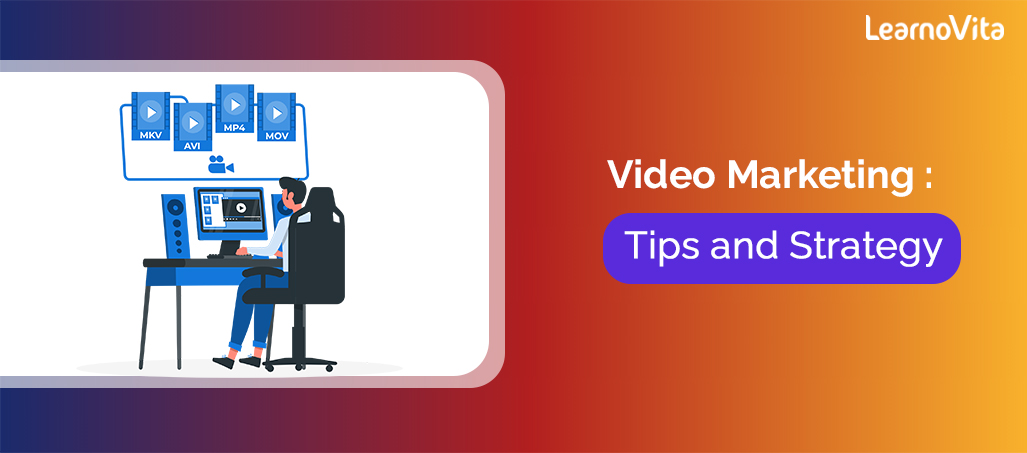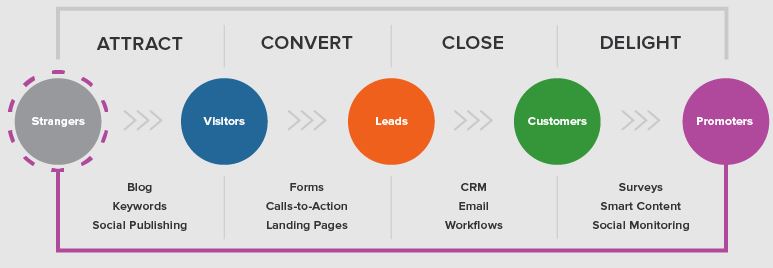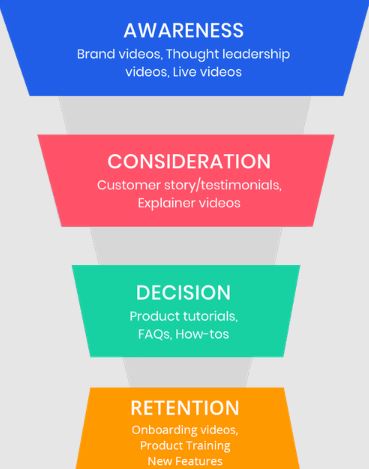- Digital Marketing for Startups | All you need to know [ OverView ]
- Which MBA Specialization is best?
- What is Digital Transformation framework? [ OverView ]
- What is Display Advertising | A Beginner’s Guide [OverView]
- SEO Strategies to Avoid Major Google Penalties In 2022 | Everything You Need to Know to Become an Expert
- Google Algorithm Changes and How it Impacts SEO Marketer | A Complete Guide For Beginners
- All the Social Media Apps You Should Know in 2022 | Everything You Need to Know to Become an Expert
- Top 10 Remarkable Benefits of being a Content Marketer | Everything You Need to Know
- What Is Inbound Marketing? Definition, Advantages | All you need to know [ OverView ]
- What are the Types of Content Marketing | Everything You Need to Know to Become an Expert
- A Complete Guide For Video Marketing: Tips and Strategy | Free Guide Tutorial & REAL-TIME Examples
- What is Email Marketing and Its Tools | Step-By-Step Process [ OverView ]
- what is Sitecore? : A Comprehensive Guide | Everything You Need to Know
- What is Branding and why it is Important for your Business? [ For Freshers and Experience ]
- Top 10 Benefits of Social Media Marketing | A Definitive Guide
- Outstanding Social Media Campaigns : A Complete Guide For Beginners [ OverView ]
- SEO vs SEM | Know Their Differences and Which Should You Learn?
- How Social Media Has Changed the Music Festival Scene | REAL-TIME Examples
- What is Alexa Ranking? : Step-By-Step Process with REAL-TIME Examples
- Content Delivery Network Process with Real-Time Examples
- Types of Digital Marketing | A Complete Guide with Best Practices
- Instagram vs Facebook : Which is More Effective | Difference You Should Know
- Digital Marketing Job Description [ Job & Future ]
- Digital Marketing Salary, Roles and Responsibilities [ Job & Future ]
- What Is Digital Business ? Expert’s Top Picks
- Traditional Marketing vs Digital Marketing | Difference You Should Know
- Top Social Media Influencers
- Social Media Marketing Skills to Grow in 2020
- What Is the Major Impact of Social Media?
- How To get more subscribers to YouTube channel?
- Digital Marketing Ebooks
- What are the rules of blogging?
- The Complete Guide to YouTube Marketing in 2020
- Top PPC Resources and Communities
- The Scope of Digital Marketing in 2020
- Tips To Learn Digital Marketing
- The History and Evolution of Digital Marketing
- The Science Behind Influencer Marketing
- Career Paths for Today’s SEO Specialist
- What does a PPC specialist do?
- How to Create a Digital Marketing Report?
- E-learning Content Deployment Considerations
- Why Choose a Career in Digital Marketing?
- Top Digital Marketing Experts
- What is Content Distribution?
- Digital Marketing Certification Process
- How Big Brands Transforming Experience Through Digital Transformation?
- Local SEO Tips To Rule Google Maps
- How to Become a Digital Marketing Specialist?
- Digital Marketing for Startups | All you need to know [ OverView ]
- Which MBA Specialization is best?
- What is Digital Transformation framework? [ OverView ]
- What is Display Advertising | A Beginner’s Guide [OverView]
- SEO Strategies to Avoid Major Google Penalties In 2022 | Everything You Need to Know to Become an Expert
- Google Algorithm Changes and How it Impacts SEO Marketer | A Complete Guide For Beginners
- All the Social Media Apps You Should Know in 2022 | Everything You Need to Know to Become an Expert
- Top 10 Remarkable Benefits of being a Content Marketer | Everything You Need to Know
- What Is Inbound Marketing? Definition, Advantages | All you need to know [ OverView ]
- What are the Types of Content Marketing | Everything You Need to Know to Become an Expert
- A Complete Guide For Video Marketing: Tips and Strategy | Free Guide Tutorial & REAL-TIME Examples
- What is Email Marketing and Its Tools | Step-By-Step Process [ OverView ]
- what is Sitecore? : A Comprehensive Guide | Everything You Need to Know
- What is Branding and why it is Important for your Business? [ For Freshers and Experience ]
- Top 10 Benefits of Social Media Marketing | A Definitive Guide
- Outstanding Social Media Campaigns : A Complete Guide For Beginners [ OverView ]
- SEO vs SEM | Know Their Differences and Which Should You Learn?
- How Social Media Has Changed the Music Festival Scene | REAL-TIME Examples
- What is Alexa Ranking? : Step-By-Step Process with REAL-TIME Examples
- Content Delivery Network Process with Real-Time Examples
- Types of Digital Marketing | A Complete Guide with Best Practices
- Instagram vs Facebook : Which is More Effective | Difference You Should Know
- Digital Marketing Job Description [ Job & Future ]
- Digital Marketing Salary, Roles and Responsibilities [ Job & Future ]
- What Is Digital Business ? Expert’s Top Picks
- Traditional Marketing vs Digital Marketing | Difference You Should Know
- Top Social Media Influencers
- Social Media Marketing Skills to Grow in 2020
- What Is the Major Impact of Social Media?
- How To get more subscribers to YouTube channel?
- Digital Marketing Ebooks
- What are the rules of blogging?
- The Complete Guide to YouTube Marketing in 2020
- Top PPC Resources and Communities
- The Scope of Digital Marketing in 2020
- Tips To Learn Digital Marketing
- The History and Evolution of Digital Marketing
- The Science Behind Influencer Marketing
- Career Paths for Today’s SEO Specialist
- What does a PPC specialist do?
- How to Create a Digital Marketing Report?
- E-learning Content Deployment Considerations
- Why Choose a Career in Digital Marketing?
- Top Digital Marketing Experts
- What is Content Distribution?
- Digital Marketing Certification Process
- How Big Brands Transforming Experience Through Digital Transformation?
- Local SEO Tips To Rule Google Maps
- How to Become a Digital Marketing Specialist?

A Complete Guide For Video Marketing: Tips and Strategy | Free Guide Tutorial & REAL-TIME Examples
Last updated on 04th Nov 2022, Artciles, Blog, Digital Marketing
- In this article you will learn:
- 1.What Is Video Marketing?
- 2.How Video Marketing Works.
- 3.Video Marketing Strategies.
- 4.What is a Video Marketing: Types of Video Used in a Marketing.
- 5.Benefits of Video Marketing.
- 6.The Challenges of Video Marketing.
- 7.Conclusion.
What Is Video Marketing?
Using video for a marketing means a incorporating a video format into the marketing strategy to promote a brand, product, service, or message. Video marketing educates an audience effectively and helps to increase engagement on a social and digital channels.
How Video Marketing Works:
- The “how” of using a video for marketing is a pretty straightforward. Marketing people create videos that either can be directly or indirectly promote a company and brand, drive sales, raise awareness of business’s products and services, or engage current and potential customers.
- Video marketing is the data-driven discipline, so your marketing department must track the customer engagement and monitor different related metrics.
- In general, video marketing is a but one component of overall marketing strategy or a campaign. However, it so happens that a video marketing’s role is be considerably much significant today, thanks to an Internet and social media.
Video Marketing Strategies:
Here is six-step strategy guide for a making high-quality, effective video marketing campaign:
Designate a resources: will need a video budget covering the resources are video equipment, effective editing software, dedicated time to work, and a video marketing team to bring elements together.
Build a story: Each video tells story. What’s story? What message are trying to convey, and how do want to share it?
Plan audience engagement: Although a message may be great, still need to ensure that an audience is vested in it. Need to hook the audience and keep a story interesting. How do I plan on accomplishing this?
Shorter is better: undoubtedly heard of an acronym TL/dr, standing for a Too long, didn’t read, in the context of a reading article. The last thing I want is to have the video audience say, Gee, how long is this video, anyway? Of course, there’s no established standard video length, but the shorter, better. The online audience’s attention span is so short, so edit accordingly.
Publish a message everywhere: The name of the game is saturation. Must embed a video on an organization’s website, upload it to YouTube, publish it on all social media accounts, and even place it on a profile page!
Track results: Keep an eye on a video’s metrics and stats. Take note of what videos perform the best and find what the elements in the most successful videos are and what they have in common. Factor those findings in future video endeavors.

Benefits of a Video Marketing:
By now most likely getting an idea that video marketing is a great idea:
- Videos boost information retention.
- The message are remains longer on a social feeds, so don’t have to spend excessive time of tinkering and updating material.
- Videos boost a public’s understanding of the services or products.
- Videos increase an exposure and subsequent engagement.
- Videos tend to be rank higher in a searches, so there’s a better chance that are website will show up closer to a top of the search page.
- Video marketing provides an simple way to personalize a customer engagement, which builds brand loyalty and also recurring visits.
Challenges of Video Marketing:
Since the problem of video-making resources has been effectively resolved challenges to video marketing are much strategic in nature. If plan to engage in a video marketing will face three significant challenges:
- How to create a content that people need to see.
- How to build solid, an effective video marketing strategy that delivers a results.
- How to create a videos that people will not only watch all way through but also share with the others.

Types of Videos Used in Marketing:
Now present a dozen assorted types of a video marketing. But of course effective video marketing campaign will be incorporate more than one of them.
Animation: Who doesn’t like the cartoons? Animation employs an engaging imagery to convey otherwise a complicated concepts.
Augmented reality videos: Augmented Reality (AR) superimposes the digital layer to what the user is viewing and is excellent for showing how something would look if a company’s product were inserted into picture.
Brand videos: These videos are build awareness of a company’s brand, mission, products, and services.
Demo videos: These videos show how a product works, including unboxing or conducting the software walk-through.
Event videos: Is a company running an event like a fundraiser, conference, or discussion? Create a highlight reel!
Explanation videos: Simple and straightforward, these videos help the audience understand why they need services and products. So often, these videos follow the standard formula of presenting a story where a buyer has a problem, and the solution lies with the company’s products or services.
How-to videos: These videos not only teach the audience how to do something new, but it also helps viewers gain an understanding and appreciation of a business.
Interviewing experts: Not a fluff piece, but an in-depth interview with the expert or thought leader in an industry.
Livestream: Live videos are an eye-catching, dramatic way to get a viewer’s attention, often using behind-the-scenes format, interviews, and demonstrations.
Personalized message videos: Nothing drives an engagement more than making a customer feel special, and personalized videos provide a means for a business to reach out to a customer to answer questions or make a recommendation.
Testimonials/Case Studies: These videos get customers involved in campaigns.
Virtual Reality and 360-degree videos: Virtual Reality (VR) immerses an user in a video environment, letting them control and navigate the viewing experience. A 360-degree video enables a viewer to scroll around in the panoramic view.
Conclusion:
Video marketing strategy is the essential marketing tool — to reach people today and keep attention you need to include online video marketing in the strategies.